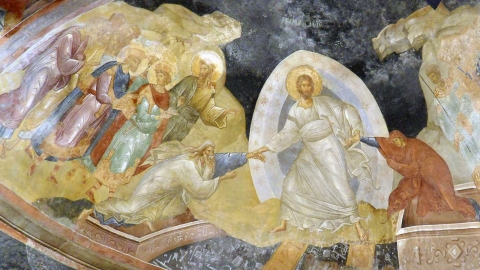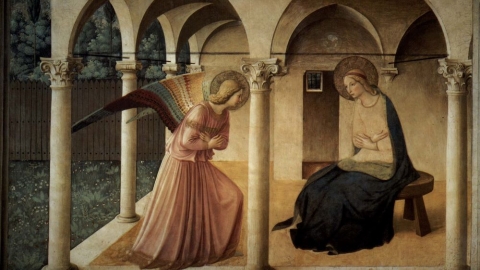Puzzlement at the Presence of the Nativity Scene in St. Peter’s Square

The Governorate of Vatican City in a press release dated October 30, 2020 announced that the Christmas nativity scene in St. Peter’s Square would be made of ceramic figurines from Abruzzo, Italy, and topped by a spruce tree from Slovenia.
The press release stressed: “A sign of hope and confidence for the whole world, the crèche wants to express the certainty that Jesus is coming among his people to save and comfort them, an important message in these difficult times because of the Covid-19 health emergency.”
The nativity scene in Castelli, where ceramics has been a specialty since the 16th century, is made up of 54 larger-than-life statues. It was designed by the students and teachers of the F.A. Grue Art Institute, between 1965 and 1975.
Only a dozen pieces are on display in St. Peter’s Square, around the central obelisk, on a 125 m2 platform: the Holy Family, the Three Kings, an angel with outstretched wings as well as a musette player, a pan flute player, a shepherdess with a jug, a little girl and her doll.
“The statues were made with annular modules which, superimposed, form cylindrical busts,” said the press release, which evokes the contemporary aspect of these works, with references to older arts.
A Sorry and Horrible Sight
During the inauguration, on the evening of December 11, 2020, a huge red curtain opens in front of a dumbfounded audience. Some people thought it was a student hoax in bad taste.
“The scene helps us understand that the Gospel can animate all cultures and all trades,” Cardinal Giuseppe Bertello, President of the Governorate of Vatican City, declared very seriously: enough to be perplexed.
The “nativity figures” - or rather the cylinders - are intended “to immortalize important events of the modern world, for example the conquest of the moon with an astronaut nativity figure,” the official Vatican news site comments gravely.
Curious, to say the least, Roman Vaticanist Aldo Maria Valli visited the manger, “a sign of hope for the whole world.” He put it simply in his blog on December 1: “This is a horrible nativity scene, which is scary and will certainly make children cry. … A nativity scene whose figures, rather than portray the Nativity, resemble an Egyptian tomb with its sarcophagi.”
About which he asks: “We are already in the grip of bad news and a lot of worry, so what are you in the Vatican doing? Instead of giving us a classic, harmonious, and beautiful nativity scene, which conveys peace and serenity, you have presented something which is perhaps monumental but which is horrible and frightening!”
Interviewed by America Magazine, the Jesuit review, Elizabeth Lev, art historian and graduate of the universities of Bologna and Chicago, sums up the situation quite well: “The Catholic Church has an incredible tradition of beauty, and yet, after a year of difficulty, we’ve put up something that makes people mock Jesus... We have distanced ourselves from contemplation of the Child Jesus,” laments the academic.
The 2020-2021 vintage of the Vatican nativity scene could also be explained another way, which was not taken up by Cardinal Bertello: the path of a Church lost in the theological and liturgical mists of the post-conciliar period, oscillating between “We walked on the moon,” and “The gods have fallen on their heads.”
(Sources : cath.ch/ imedia/vatican news/aldomariavalli/America Magazine – DICI n°403, décembre 2020)
Illustration : Facebook / Capture d’écran





